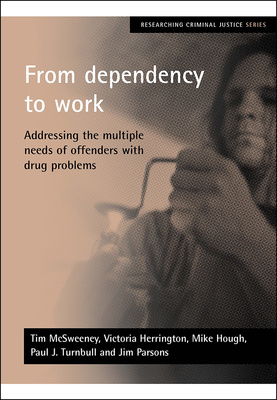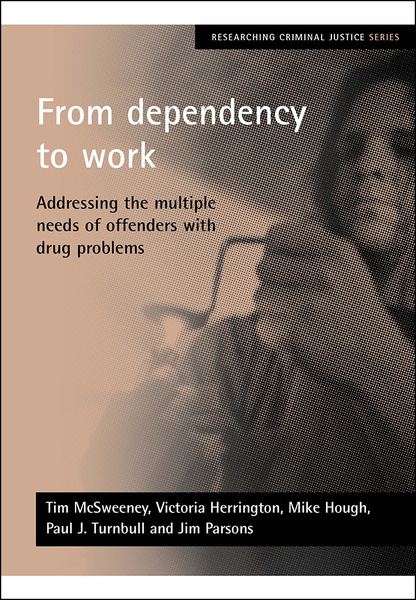From dependency to work
Addressing the multiple needs of offenders with drug problems
By Tim McSweeney, Victoria Herrington, Mike Hough, Paul J. Turnbull and Jim Parsons
ISBN
978-1861346605Dimensions
245 x 170 mmImprint
Policy PressThis report presents the findings from one of the first evaluations of a British programme to integrate drug and alcohol treatment with mental health services, and education, training and employment support - the 'From Dependency to Work (D2W)' programme. It provides an invaluable insight into the challenges and difficulties of integrating services in this way and highlights important lessons for central and regional government on funding and working with the voluntary sector to deliver services. With the recent launch of the Drug Interventions Programme (DIP), designed to get statutory and voluntary sector agencies working together to tackle the social factors associated with drug misuse and crime, stakeholders across the country will need to develop effective multi-disciplinary working in this field. This report provides all those involved, from a strategic level to frontline practitioners, with a clearer understanding of the issues.
Tim McSweeney and Victoria Herrington are Research Fellows, Mike Hough Director and Paul J. Turnbull Deputy Director, all at the Institute for Criminal Policy Research at the School of Law, King's College London. Jim Parsons is Senior Research Associate at the Vera Institute of Justice, New York.
Chapter 1: Background: Background to the programme; Aims and objectives of the programme; The programme's target group; Methodology; The report; Chapter 2: How the programme performed: The effectiveness of D2W as a pan-London referral mechanism; Client perceptions and experiences of D2W; The short-term impact of D2W on offending behaviour; Chapter 3: Constraints on programme performance: Setting the programme up; Wider structural and organisational changes; Internal programme management and organisation; Recruiting and retaining staff; Confusion about the scope of the scheme; Problems identifying multiple needs; Treatment planning and care management; Addressing multiple needs: a parallel or sequenced approach?; Developing an exit and forward strategy; Chapter 4: Conclusions: Did D2W help those who engaged with it?; Did D2W reach the target number of offenders with multiple needs?; Did D2W actually address multiple needs?; Was the D2W concept viable?; What funding and performance management regimes might better foster partnership work?; How best should government contract with the voluntary sector?; Successors to D2W?; Conclusion.









